
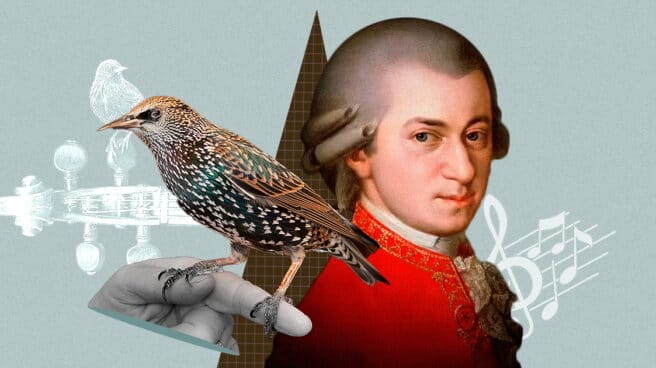
On May 27, 1784, Wolfgang Amadeus Mozart was walking along one of the streets of Vienna when his stockings fell to his ankles. He bent down to pick them up, and suddenly heard his last symphony. How was this possible, if at that moment only he and his father, who was in another city, knew her? He got up and walked towards the sound, more and more intrigued.
She was coming out of the pet store and a little bird in a cage was whistling at her. The composer quickly took out his wallet and took it home under the name Starling. We assume that Mozart would have thought that if he could sing his Piano Concerto No. 17 in G major, he must be a special animal. Wrong. It was the starling, the most common bird in Europe and, centuries later, the most hated in the United States.
Leanda Lynn Haupt, an American ornithologist, read the story in a book, heard it at a meeting, or saw it in a documentary. She remembered her when she had to hit the window more than usual to get a flock of starlings to leave her house so that this pest bird would stop bothering her and the rest of the animals in her garden. He started looking for it and realized that it was a true story and more beautiful than he remembered. Well, I heard the story and wondered if it was true or just part of Mozart’s vast mythology. After digging through letters, notebooks and diaries written by people who visited him, I was able to remake part of the plot, and it turned out better than I expected, ”he says by email. Independent from Seattle. Better because the friendship lasted until the death of the bird, more than three years, and because thanks to her now published Mozart starling (Captain Swing), a compliment to that starling, not to the species.
I reluctantly realized that in order to truly understand what it meant to Mozart to live with a starling, he would have had to live with a starling as a master.”
LIANDA LYNN HAUPT
In this book, he tells how the composer lived with the bird, and manages to be accurate after many months of research. “I studied Vienna in Mozart’s time, family life and its different houses, I traveled to Vienna and Salzburg to learn everything I could on the spot, and I began to study his music. And, of course, I have spoken on these topics with countless scientists. It was so exciting!” he recalls of his research, in which, in order to complete it 100%, he took one of these birds. “I reluctantly realized that in order to truly understand what it meant for Mozart to live with a starling, he would have had to, as a master, live with a starling,” he writes.
But it wasn’t easy. Although in Europe at the time of the composer, these birds were very common, they were well seen and could be bought in pet stores; in the United States for more than three decades they have been a real plague. “If you google ‘America’s Most Hated Bird’, almost every result mentions the starling. Such universal agreement isn’t usually common, but everyone seems to agree on this: starlings are rats with wings,” says Noah Stryker, an ornithologist and the person who has seen the most bird species in a single year, as Haupt collects in his book . .
So these winged rats are not very popular in North America, so few that it is legal to kill them, and it is forbidden to care for them. It was not easy and not fast for the author to give birth, like a young starling, those that came to her garden were already old and it was impossible to tame them, but one day a friend called her: she knew where they had just been born, but she needed to hurry because they were going to be killed the next day. So Haupt went with her then-husband Tom Furtwängler to rescue one of them, and a few hours later a tiny starling fell into her hands from the nest. A tiny bird without feathers and with a fierce hunger, who, when they learned her gender, they named Carmen (which means Song), and whose story is also told in this book.
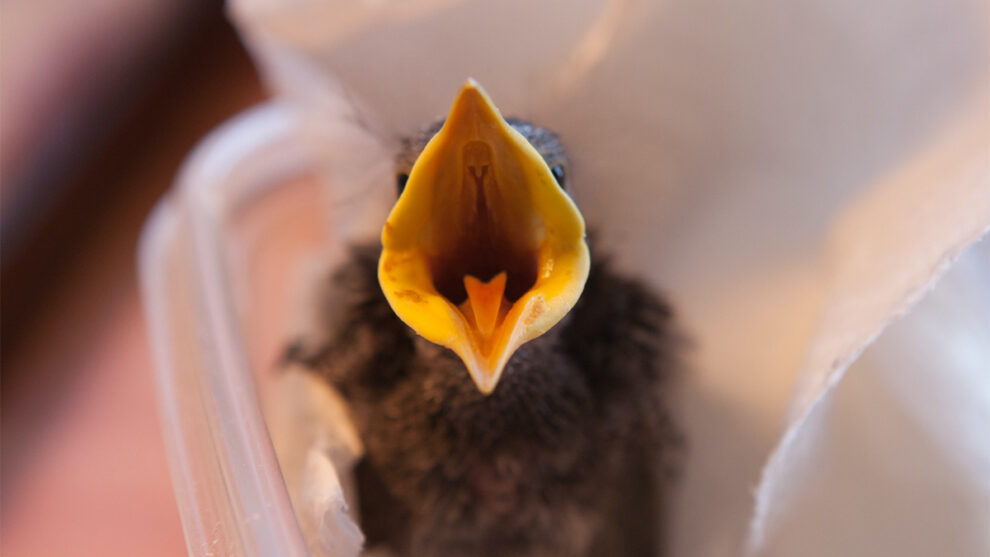
Carmen a few weeks after birth.
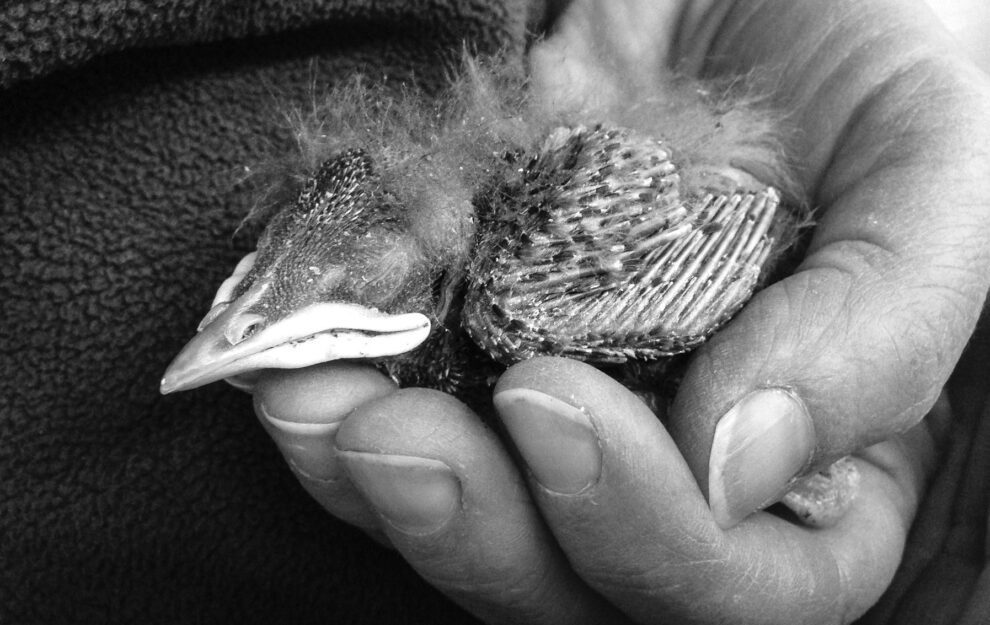
Carmen, pulling him out of the nest.
“I hope that when people become aware of the charming life and behavior of Carmen, the starling with whom I lived, as well as such an exalted musician as Mozart, who finds a muse in such a common and despised bird, they will open their minds to understand that starlings as individuals are charming, playful and intelligent birds, gifted singers and mimics. And beautiful, we often don’t notice them, because they are so ordinary, but the plumage of starlings is bright and iridescent,” he explains in an interview.
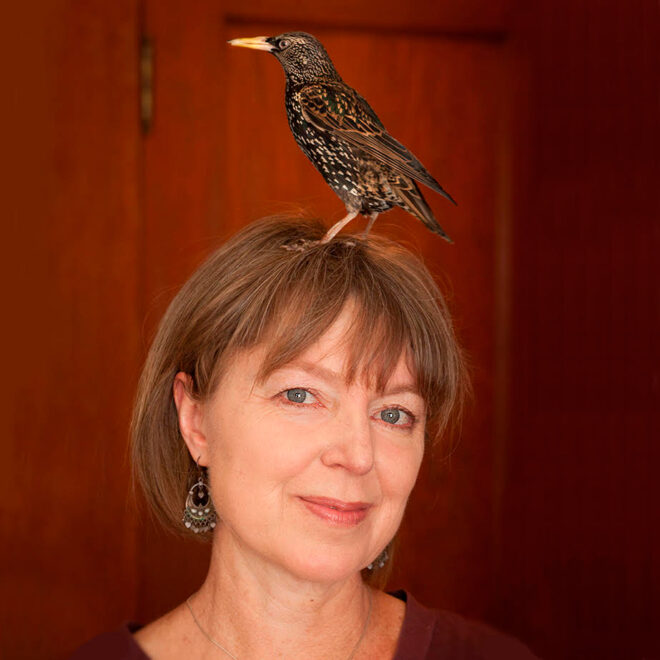
Although he admits that the love he felt for Carmen did not make him stop thinking that this species is a very big problem in his country. “We can identify with individuals in a much more personal way than with populations, which are more abstract. But I must say that I still try to prevent starlings from nesting in my garden! ”He assures and explains that“ they are very problematic.
There are 200 million members of this species in the United States, and eradicating it not as a species, but as a pest is very difficult and only possible in the very long term. “We should plant trees, prevent deforestation (starlings live on the edges, not in healthy forests) and prevent starlings from nesting in our homes. In fact, anything we can do to restore forest habitat and prevent further deforestation will help local bird populations and prevent further environmental damage from starlings.”
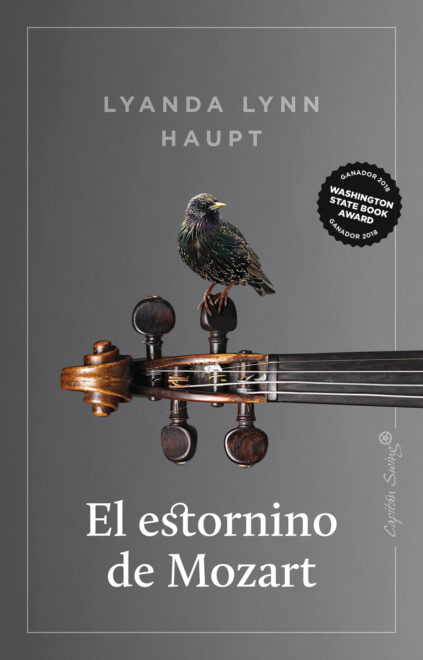
In addition, with the story of Mozart, he intends, in addition to restful curiosity, to tell how people and animals can create very strong bonds, even if the animal is the most common bird in Europe. “This is a lesson in the relationship between Starling the Starling and Mozart. As if during their life together, the starling helped the composer, ”he explains. When the bird arrived at the Mozarts’ house, they were expecting a second baby, the first died at 6 weeks of birth, and although his wife did not think that this was the best time to adopt animals, she fell in love with the chick. bird as much as her husband husband. “In the end, he did not stop singing, and Mozart made him his muse. It’s funny to think that the muse of the best composer in history was a bird,” he adds. When the starling died three years after his adoption, Mozart gave him a funeral in paseio, songs and even a poem. Unlike what he did at his father’s funeral, he did not attend.
Also that “Mozart was misinterpreted.” “Many perceive the film “Amadeus” as a kind of biography, but this is fiction! Mozart was not as buffoonish as he is portrayed in this film. I think the story of Mozart and his starling helps shed light on the nuances with which the composer viewed the world. He loved animals and nature, and this love was reflected in his music. I believe that in this book, readers, whether they know a lot about Mozart or not, will find something new for themselves in his life and work,” he explains in an interview.
Source: El Independiente